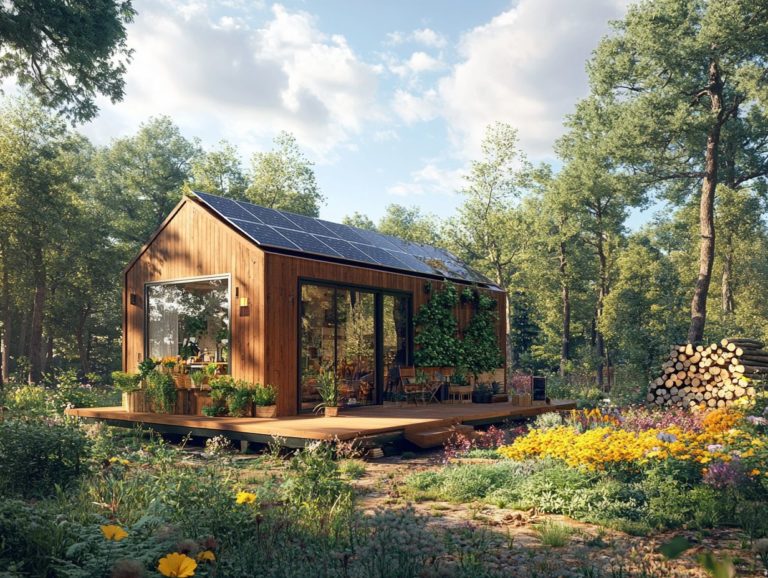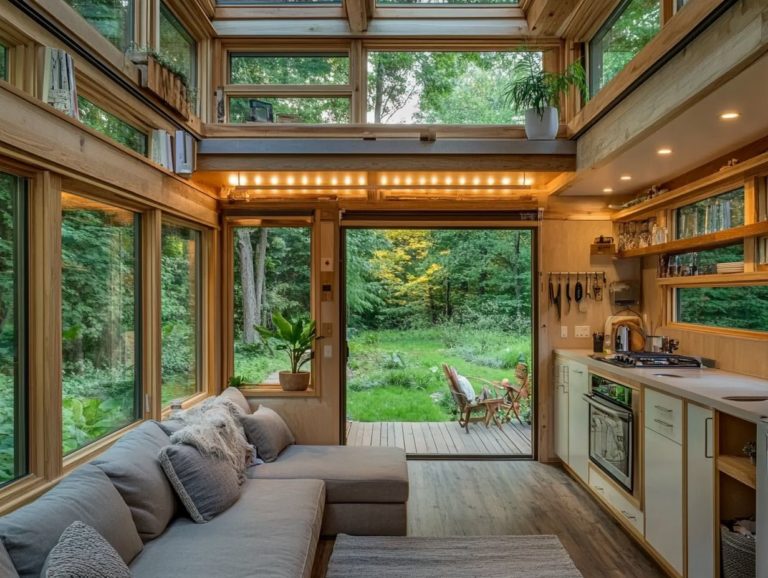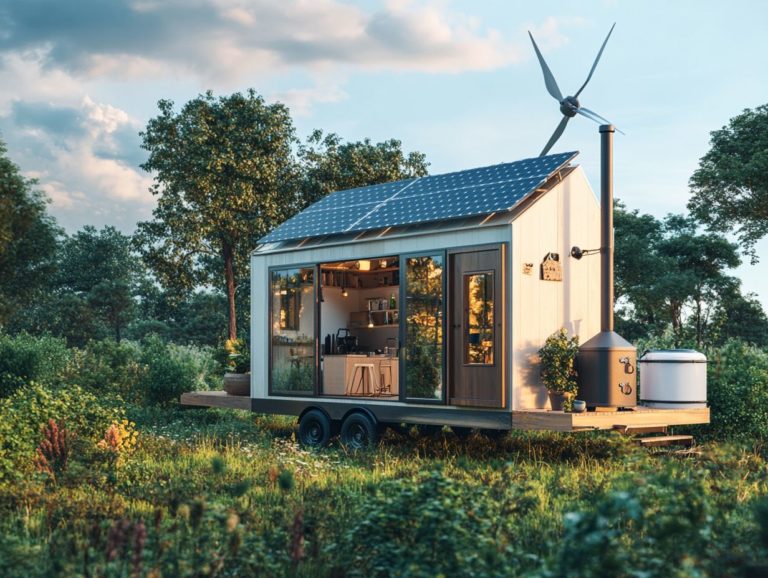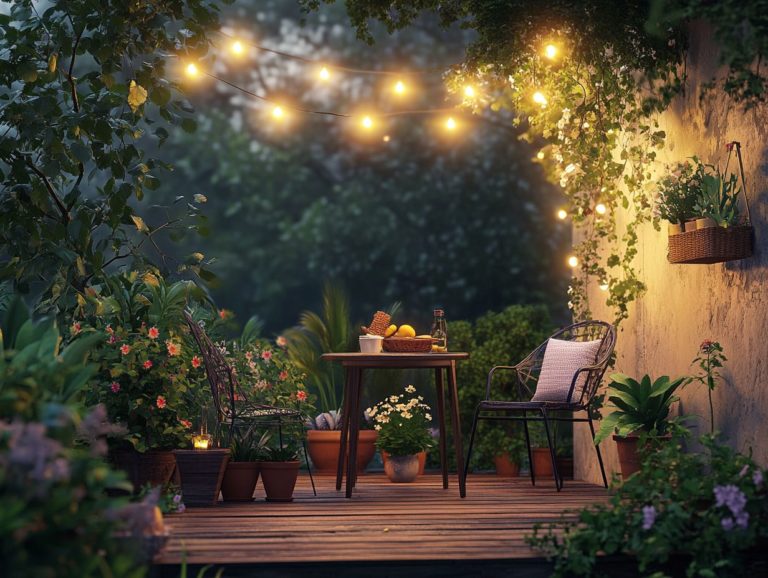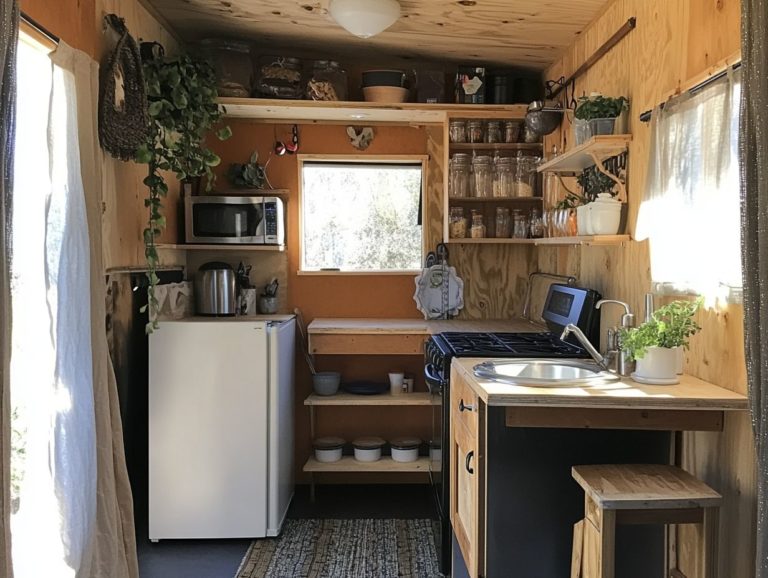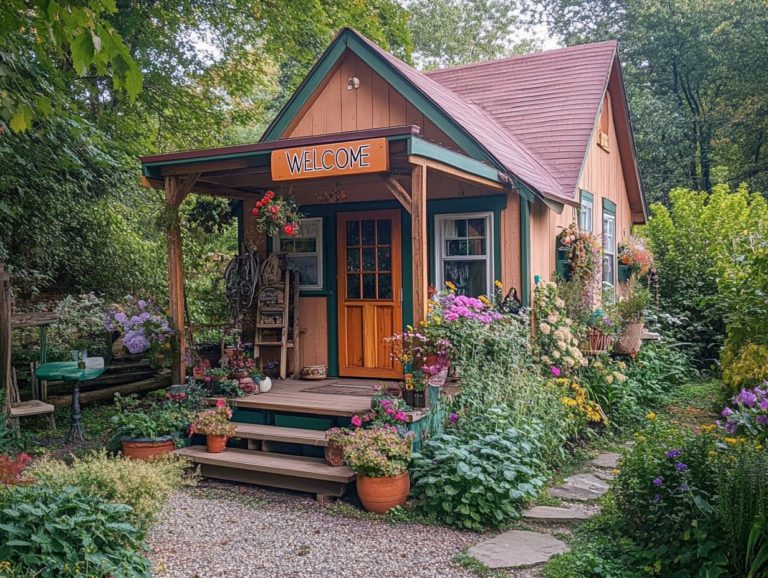Can I Live in a Tiny House in the City?
Are you intrigued by the tiny house movement and wondering if it might be a practical choice for urban living?
This article delves into the essentials of tiny houses, shedding light on what they are and the myriad benefits they provide, such as significant cost savings and a smaller environmental footprint.
However, residing in a tiny house within the city brings its own unique challenges, from navigating zoning regulations to making lifestyle adjustments.
You’ll want to consider various factors before taking the plunge, and we ll also explore alternatives to tiny living that might suit your needs.
Join us as we unpack everything you need to know about tiny houses in urban environments.
Contents [hide]
- Key Takeaways:
- Understanding Tiny Houses and Pennsylvania Geography
- Benefits of Living in a Tiny House
- Urban Tiny House Living: What to Expect
- Factors to Consider Before Living in a Tiny House in the City
- Alternatives to Living in a Tiny House in the City
- Frequently Asked Questions
- Can I Live in a Tiny House in the City?
- What are the regulations for living in a tiny house in the city?
- Do I need a special permit to live in a tiny house in the city?
- Can I park my tiny house on any available lot in the city?
- What are the benefits of living in a tiny house in the city?
- Are there any downsides to living in a tiny house in the city?
Key Takeaways:
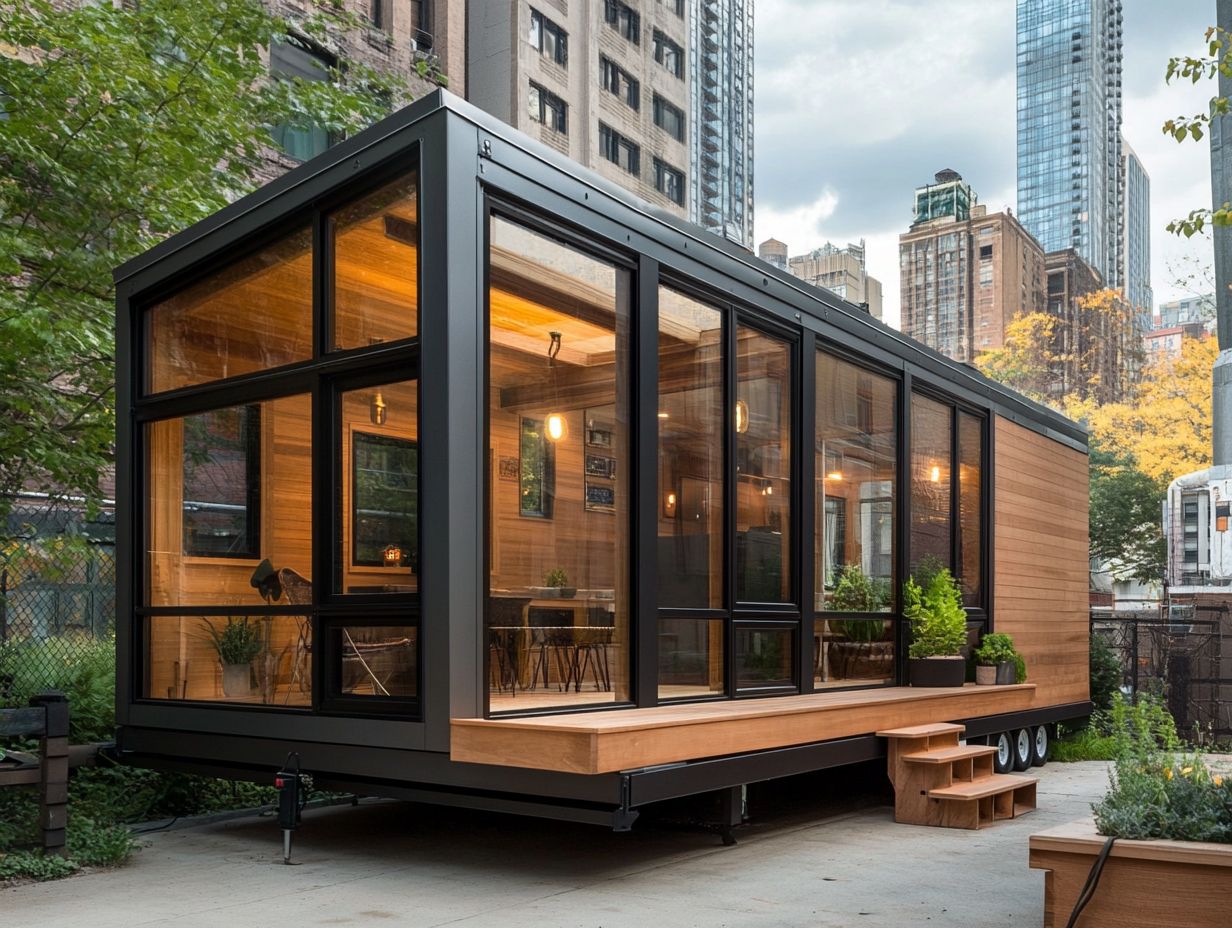
- Tiny houses are small, efficiently designed homes that typically range from 100-500 square feet in size.
- Living in a tiny house in the city can save you money and reduce your environmental impact, but it also comes with challenges such as zoning regulations and space constraints.
- Before deciding to live in a tiny house in the city, consider factors such as your finances and the availability of community and support systems.
Understanding Tiny Houses and Pennsylvania Geography
Understanding tiny houses invites you to explore a distinctive phenomenon that has surfaced as a response to the challenges of modern living, particularly in bustling cities and regions like Lancaster County, Bucks County, and York County.
Tiny homes typically defined as dwellings under 400 square feet emphasize simplicity and pragmatism in design. They often resonate with those who aspire to an eco-friendly lifestyle and minimalist living.
These compact structures signify a burgeoning movement that prioritizes affordable housing solutions, all while navigating the rising tiny house prices driven by demand and strict tiny house regulations.
What is a Tiny House?
A tiny house is a compact dwelling that usually measures less than 400 square feet, crafted to maximize space and minimize environmental impact. You ll often find these gems in unique settings like RV parks or tiny house communities.
These homes boast innovative design features such as multi-functional furniture, high ceilings, and large windows, all of which create an inviting illusion of spaciousness. The construction materials are diverse, ranging from traditional wood and metal to eco-friendly choices like recycled plastics and bamboo, highlighting sustainability.
Opting for a permanent foundation gives you stability and legality, which is a significant advantage over temporary structures that might encounter zoning hurdles.
Among the various types of tiny homes, mobile tiny houses offer you the freedom to travel and explore venues such as National Parks, while accessory dwelling units, additional small homes built on the same property as a larger house, add valuable living space within existing properties. Understanding tiny house zoning laws can enhance community density and affordability.
Benefits of Living in a Tiny House
Living in a tiny house presents a wealth of advantages, from substantial cost savings to a diminished environmental footprint, all while fostering an eco-friendly lifestyle. This minimalist approach invites you to prioritize what truly matters in life, encouraging a sense of community through shared activities and resources.
It also helps you navigate the challenges posed by the escalating prices and zoning restrictions associated with larger homes. This allows you to enjoy a simpler, more fulfilling existence.
Cost Savings and Environmental Impact
One of the most compelling advantages of choosing a tiny house is the substantial cost savings you ll enjoy. This includes lower property taxes and reduced energy bills. Plus, tiny house prices make homeownership much more accessible for you. Are you ready to take the plunge into tiny living?
Beyond these financial benefits, tiny houses significantly contribute to environmental sustainability. By taking up less space and utilizing fewer resources, you can cut your energy consumption by squeezing into just 100 to 400 square feet. This typically results in energy use that can be 75% lower than that of traditional homes! This is a game changer!
With their smaller carbon footprints, tiny living actively aids in the fight against climate change. Studies suggest it can lead to up to a 45% reduction in carbon emissions. Plus, the lower maintenance costs associated with these compact dwellings make them not just financially smart, but also ecologically sound choices for anyone looking to lessen their impact on the planet.
Urban Tiny House Living: What to Expect
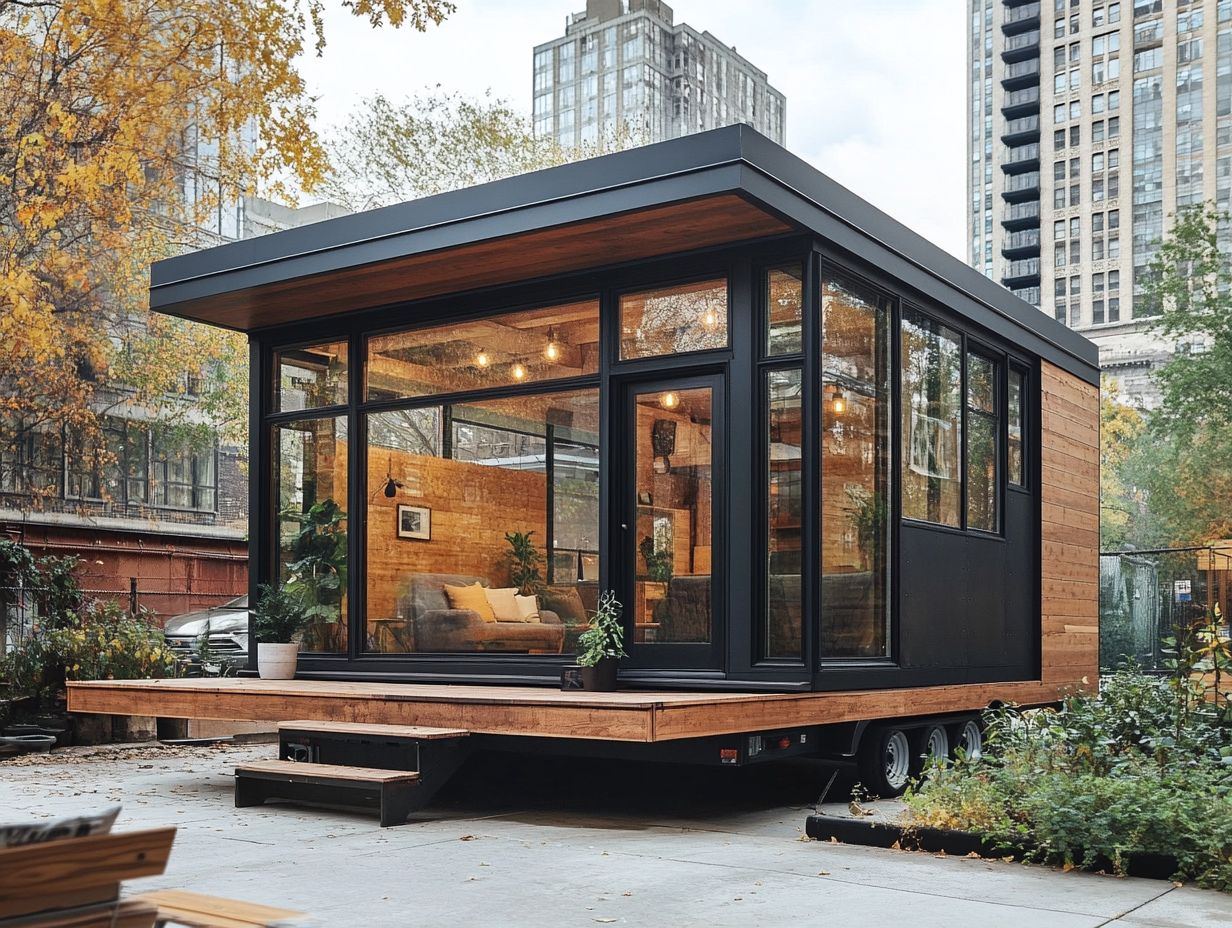
Living in a tiny house certainly offers a wealth of benefits, but it also presents a distinctive array of challenges, especially in urban settings. Here, zoning laws which dictate how land can be used in a specific area and building codes can complicate the process of establishing your small sanctuary.
In bustling cities, you may find yourself dealing with space limitations and navigating a labyrinth of tiny house regulations. These rules dictate everything from minimum square footage to design specifications, directly influencing your aspirations for a minimalist lifestyle. It’s crucial to familiarize yourself with understanding tiny house land use laws to ensure compliance and make informed decisions.
Zoning and Building Regulations
Zoning and building regulations are pivotal when considering tiny house living, as these rules fluctuate dramatically from one municipality to another. They often dictate where you can place your tiny home and how it must be constructed.
These regulations can influence everything from minimum square footage requirements to the types of materials allowed. They shape not only your design but also the overall community atmosphere. For instance, in Lancaster County, specific zoning ordinances may limit tiny homes to designated agricultural areas. In Bucks County, you might encounter hurdles due to stringent building codes focused on safety and habitability. If you’re wondering, is it possible to downsize to a tiny house? is a common question that many potential tiny home owners ask.
In contrast, York County is witnessing a shift. Local officials are beginning to embrace tiny house communities while grappling with how to integrate them into existing residential frameworks. This creates a complex landscape for you as a potential tiny homeowner, necessitating careful navigation to ensure compliance with local laws and neighborhood expectations. For those interested in this lifestyle, designing a tiny house for urban living can offer valuable insights and strategies.
Space Constraints and Lifestyle Adjustments
Living in a tiny house requires you to make significant lifestyle adjustments due to space constraints. You ll find yourself rethinking your belongings and embracing a more communal lifestyle that fosters connections with long-term residents in tiny house neighborhoods.
By adopting decluttering practices, you can create a more serene living environment while making the most of every inch of your home. Multifunctional furniture becomes your best friend think sofas that convert into beds or tables with built-in storage helping you maintain both comfort and practicality.
Innovative storage solutions, like under-bed compartments or wall-mounted shelves, will enable you to maximize your limited square footage. If you’re wondering, can I live in a tiny house with a family? Don’t underestimate the power of community! Building friendships in tiny house neighborhoods can make your living experience richer and more fulfilling. Shared spaces and communal activities not only promote camaraderie but also cultivate a sense of belonging that enriches your overall tiny house experience.
Factors to Consider Before Living in a Tiny House in the City
Before you fully embrace the tiny house lifestyle in the city, there are several essential factors to weigh carefully. Take a moment to assess your financial situation, as well as local building authority regulations that might affect your plans.
Also, consider the availability of community and support systems that can help ease your transition into tiny living. This is especially important in tiny house communities where shared resources are valuable.
Financial Considerations
Financial considerations are crucial when thinking about making the leap to a tiny house. It s essential to evaluate tiny house prices, property taxes, and your overall financial strategy to ensure long-term affordability.
You need a clear understanding of the upfront costs of purchasing or building a tiny home, as well as ongoing expenses like utilities, insurance, and maintenance. Many people choose to downsize to lessen their environmental footprint. If you’re considering renting out your space, you might wonder, can I rent out my tiny house? It’s vital to develop a personalized budget that aligns with your unique lifestyle goals and financial situation.
Explore financing options, potential mortgages, and rental arrangements for tiny house rentals. These can help you find a path that suits your tiny living dreams while factoring in savings from reduced living costs. It’s also important to consider understanding tiny house regulations in urban areas, significantly enhancing your quality of life.
Community and Support Systems
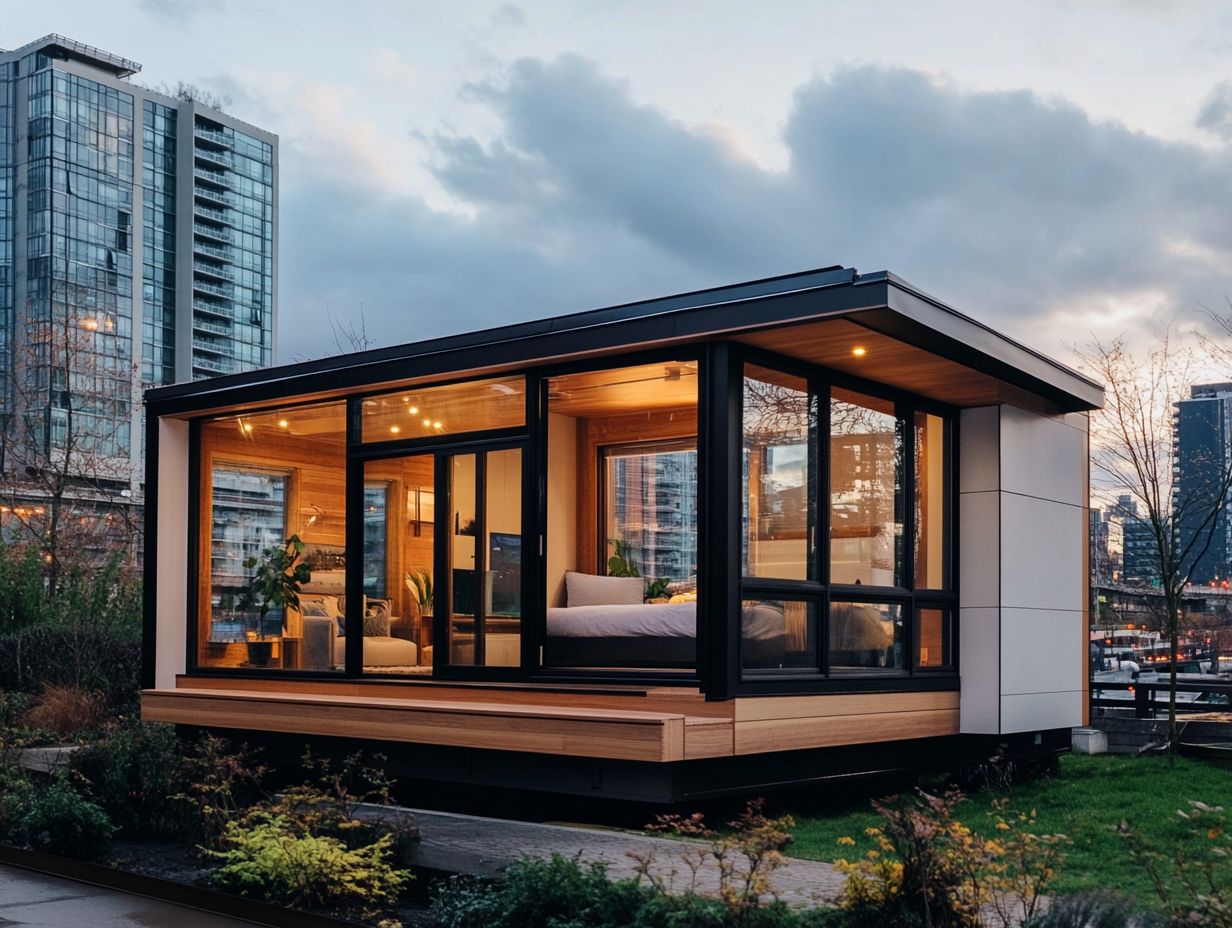
Establishing a robust community and support system is essential for anyone contemplating the tiny house lifestyle. These networks offer invaluable resources, shared experiences, and opportunities for communal activities that enrich life in tiny house communities.
You ll quickly realize that the unique challenges and rewards of downsizing are best tackled together. Supportive networks provide emotional comfort and serve as platforms for exchanging practical advice on design, zoning rules, and sustainable practices.
Successful tiny house communities frequently host workshops, potluck dinners, and gardening projects. These foster connections among residents while enhancing the living environment. As you explore this lifestyle, it’s also important to understand whether you need a special permit for a tiny house. Through shared experiences, you’ll forge meaningful relationships and cultivate a sense of belonging that makes the transition to a minimalist lifestyle fulfilling.
Alternatives to Living in a Tiny House in the City
If tiny house living doesn t resonate with you, there are appealing alternatives offering small living options with comparable benefits. Consider transitional structures or the charm of RV parks, both effectively meeting the demand for affordable housing in urban environments.
These alternatives allow you to enjoy a simplified lifestyle without sacrificing comfort or accessibility.
Other Small Living Options
Explore small living options like mobile tiny houses, accessory dwelling units, and recreational vehicles. These offer distinct advantages for those seeking an alternative lifestyle that emphasizes affordability and flexibility.
These alternatives appeal to a growing segment of society that values minimalism, sustainability, and mobility in their living situations. Imagine the freedom of mobile tiny houses, allowing you to relocate while still enjoying a cozy living space. However, it’s important to understand how to deal with zoning laws for tiny houses, fostering a deeper connection with nature and diverse communities.
Accessory dwelling units, often nestled on existing properties, can provide potential rental income and serve as practical solutions for multi-generational living. Recreational vehicles afford you the luxury of a nomadic lifestyle without compromising comfort.
Each of these options underscores the rising tiny house movement, addressing the pressing need for affordable housing in an increasingly costly real estate market. They encourage you to redefine your living standards.
Frequently Asked Questions
Can I Live in a Tiny House in the City?
Yes, you can live in a tiny house in the city. However, be aware of certain regulations and considerations before making the decision.
What are the regulations for living in a tiny house in the city?
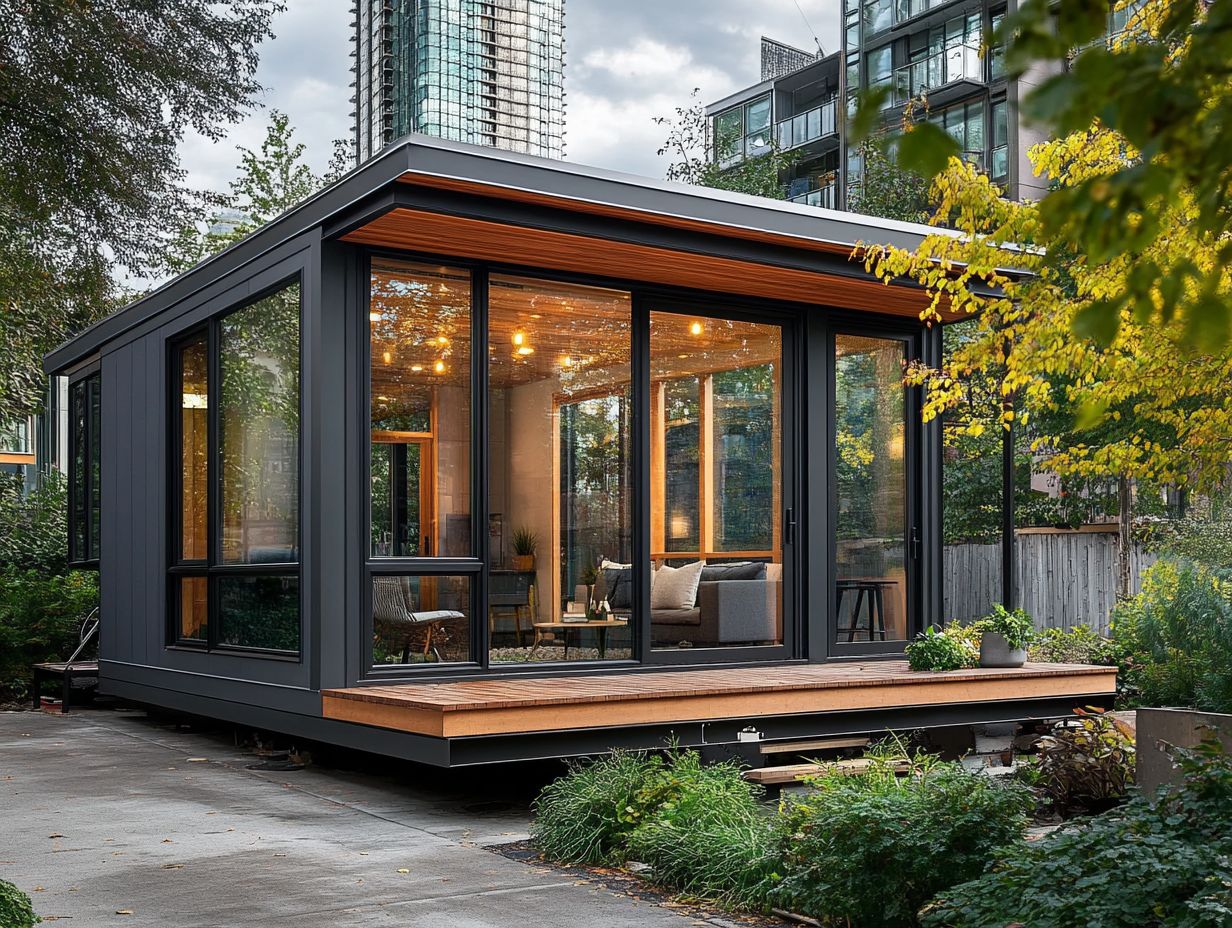
Regulations for tiny houses vary by city and state. Research and understand the zoning rules, building codes, and permits required for living in a tiny house in your specific location.
Explore local tiny house communities and resources to further understand your options.
Do I need a special permit to live in a tiny house in the city?
Yes, most cities require a special permit for tiny houses. Always verify with your local government.
Can I park my tiny house on any available lot in the city?
No, you can’t park a tiny house just anywhere in the city. Zoning laws and building codes dictate where you can place them, so it’s crucial to understand these rules before choosing a location.
What are the benefits of living in a tiny house in the city?
Living in a tiny house in the city has great benefits. These include lower living expenses and a smaller carbon footprint.
A tiny house also promotes a simpler lifestyle and offers more flexibility and mobility compared to traditional housing options.
Are there any downsides to living in a tiny house in the city?
Yes, living in a tiny house in the city has downsides. You may face limited space and challenges in finding suitable parking.
Additionally, zoning and building regulations can pose difficulties. Carefully consider these factors before deciding to live in a tiny house in the city.

